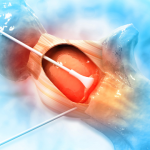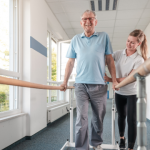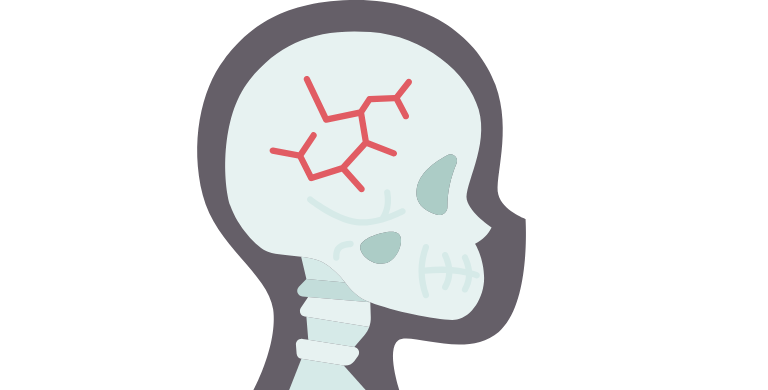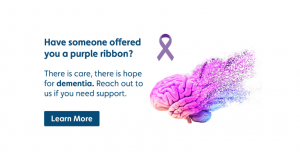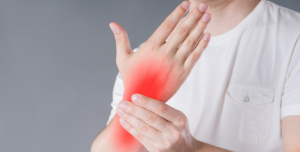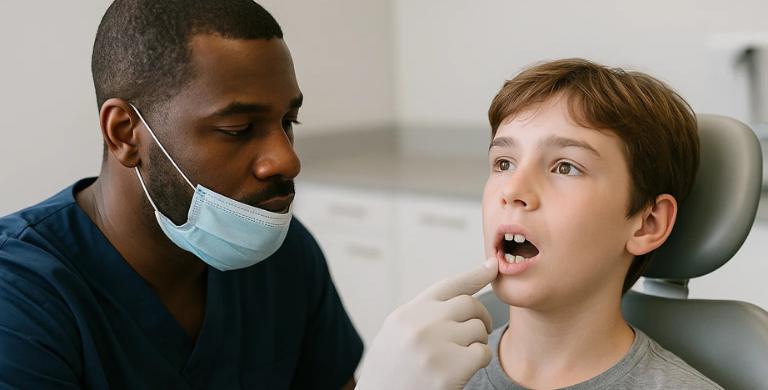While it can only take a few seconds for a spinal cord injury (SCI) to occur, the impact can last a lifetime.
What happens to the body when the spinal cord is injured?
The first thing most people notice is that muscles in the legs or arms become weak or completely paralysed. It happens because the spinal cord carries signals from the brain to the muscles, allowing you to move. However, SCI affects much more than the strength of arm and leg muscles. The spinal cord carries signals of feeling from the body to the brain. It also helps control body parts that work automatically, like the bladder, bowel, and heart. When these things do not work correctly, serious medical problems can develop.
Types of spinal cord injuries
Many types of injuries and diseases can cause spinal cord injury or dysfunction. For example, if the spinal cord (spinal canal) space becomes narrowed, the spinal cord can become injured. It can happen when bones in your back or neck are broken, or when ligaments are torn, and the vertebrae move in different directions. Sometimes the cord can be damaged without breaking the bone, e.g., gunshot or stab wounds. Infections and tumours near the spine can also compress the spinal cord, and sometimes, arthritis can affect the bones and slowly compress the cord. Finally, the blood supply to the spinal cord can be blocked, causing part of the spinal cord to die.
Damage to your spinal cord can cause changes in your movement, feeling, bladder control, or other bodily functions. These changes depend on where and how badly your spinal cord was injured.
The two types of spinal cord injuries include:
- Incomplete SCI: The patient can move some muscles or experience some sensation beneath the injury site. These patients may have more potential to regain muscle control and feeling.
- Complete SCI: The patient cannot move the muscles or experience sensation beneath the injury site. The spinal cord does not need to be cut for this to occur. A spinal cord bruise can have a similar effect.
A team approach to recovery
The goal of rehabilitation and recovery treatment is to help design a lifestyle that will allow patients to function as independently as possible within the realm of their ability. Patients need to understand how SCI has affected their bodies and become experts on how to take care of themselves to maximise their function, enjoy life, and stay healthy.
Those treated in a sub-acute rehabilitation facility make more significant strides, return home sooner, have fewer complications, and enjoy a higher quality of life. Research also indicates that an early start to rehabilitation can optimise functional gains. Intercare Sub-acute hospitals provide that early start and deliver a comprehensive rehabilitation care program to best address the patient’s needs and goals.
The comprehensive and integrated SCI program is designed to maximise neurological recovery and optimise function. The goal-directed approach enables the patient to:
- Improve physical function and mobility.
- Develop the skills and strategies to perform daily activities or work duties.
- Utilise adaptive technologies that facilitate the ability to perform activities successfully.
- Improve the ability to manage pain and gain control over your life using a supervised exercise programme and coping strategies.
- Define what intimacy can look like within your close relationships after your injury.
- Increase self-esteem and confidence.
- Develop strategies and skills to address any cognitive difficulties.
At an Intercare Sub-acute hospital, the patient will benefit from the care and treatment and the SCI rehab team’s training, support, and encouragement. The care plan includes the services of some of the following healthcare professionals:
- A GP or specialist is responsible for managing your medical needs, including pain and secondary health issues.
- Nurses help with daily care, including education on medication management, bowel and bladder routine management, wound management, and skincare.
- Physiotherapists will tailor exercises and techniques that target strength, balance, mobility, and gait training. They also help patients with the use of assistive equipment and orthotics if prescribed.
- Occupational therapists can help patients improve their ability to perform daily activities such as feeding, dressing, grooming, bathing, home safety, and the use of assistive devices.
- A dietitian will assist in planning healthy meals and address dietary problems such as weight or high cholesterol levels.
- A psychologist helps to overcome the psychological and social problems that often interfere with adjustment to life ahead.
- A social worker helps patients, and their families deal with the feelings of anger, sadness, depression, confusion, and anxiety that are common after a traumatic SCI.
The family
A spinal cord injury affects not only the patients but also their families. The family has an important role to play in actively participating in the patient’s rehabilitation. If a patient loses their independence, it could mean that their families too will have to cope with some changes in their lives.
Family education and training are crucial to help reinforce the patient’s life skills.
Sources and References consulted:
- Spine Universe – www.spineuniverse.com/conditions/spinal-cord-injury/spinal-cord-injury-rehabilitation-what-expect
- University of Utah Health – https://healthcare.utah.edu/neilsen-physical-rehab-hospital/specialties/sci-spinal-cord-injury/yes-you-can.pdf
- Cone Health – www.conehealth.com/services/spine-care/spinal-cord-injury-rehabilitation/
- Spinal Cord Injury Research Evidence – http://scireproject.com/community/wp-content/uploads/SCIRE-C.-Understanding-Rehab.-3-Download.pdf
Fostering recovery and restoring health
The four physical rehabilitation hospitals feature 36 to 52 beds, ensuring personalised attention and an intimate healing environment. Here, patients work towards regaining their strength, mobility, and independence under our multidisciplinary team of experienced professionals, including general medical practitioners, case managers, physiatrists, nurses, physiotherapists, occupational therapists, speech therapists, psychologists, dieticians and social workers. They all work together to create comprehensive, customised treatment plans.
Recover in an environment that offers best-practice care, facilities and comfort.


